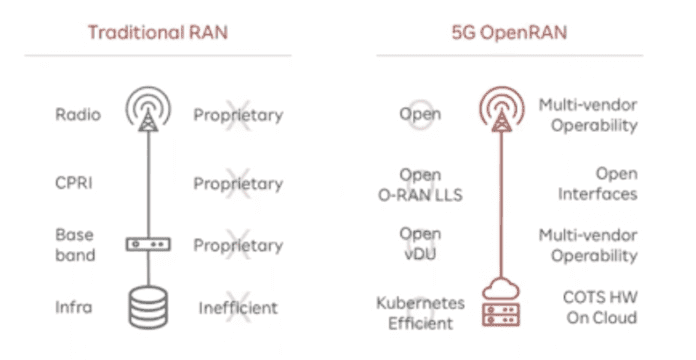Partnership includes Open RAN and a drive toward advanced network automation
As it continues to pursue integration of Open RAN technologies into its multi-national network footprint, Telefónica Global CTIO Enrique Blanco and Rakuten Mobile CTO and CAO Tareq Amin discussed a newly announced partnership that will see the two companies collaborate on Open RAN, 5G core and other autonomous network functionality.
In a webinar, Blanco laid out a three-phase timeline for driving Open RAN tech into 50% Telefónica’s network in the 2022-2025 timeframe. Phase 0 is underway and includes pilot projects; Phase 1 is marked by initial deployments between 2021 and 2022; Phase 2 is massive deployment beginning in 2022.
“The traditional radio vendor, it is not enough,” Blanco said, adding that Open RAN is a “necessity. We are trying to build a common approach in the architecture. We are working together on how we can be much more close on the procurement.”
Addressing the ongoing question of whether Open RAN can operate at scale, Blanco said, “This is not a wish. This is not a hope. Rakuten demonstrated that it is a fact.”
Rakuten launched a fully-virtualized, cloud-based LTE network on April 8. Today the network comprises 6,015 macro sites and supports more than 1 million subscribers that use around half a gigabit of mobile data per day with 50% of that traffic being video and streaming.
Amin, speaking during the webinar, said this approach has yielded a 40% reduction in capex and 30% reduction in opex. As it moves on to providing 5G services in the near future, Amin detailed his goals around creating what he dubbed a “Level 4 autonomous network.”
“Automation is the main scale differentiator,” Amin said, detailing the following milestones: process automation, cognitive process automation, introduction of virtual agents and analytics, and AI/ML-based execution.
“This is not a whitepaper,” he said. “This is within grasp.” But to achieve the goals of network self-management and healing, “collaboration and ecosystem” are imperative. “What happens if entire telco network become commoditized? The functions and the application onboarding becomes easier.”
Amin continued: “The advancements that happen in software and the excitement we have about Open RAN is not just simply and purely about the fact that I’m just opening the [radio] interfaces. It’s about the future possibilities when these networks become fully autonomous.”
In partnership with Telefónica, “We’re going to spend a lot of effort and energy around joint development of automation…move away from the legacy to a new world in which AI/ML becomes the way you manage networks.”

